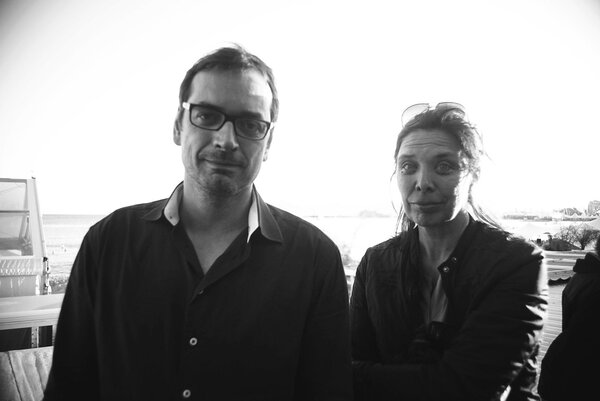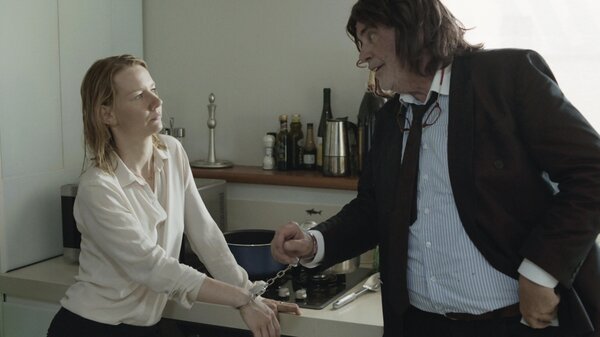Cinematographer Patrick Orth and Production Designer Silke Fischer discuss their work on Maren Ade’s film ‘Toni Erdmann’

How did you prepare for this movie ?
Silke Fischer : This was my second collaboration with Maren. Everything began when we began to choose the sets. We reviewed a huge number of different places before deciding on the ones we would use for the film. This included both the German part filmed in Aachen and the majority of the film shot “in situ” in Romania. We visited a dozen hotels for example, and over 50 apartments. We took tons of photos in every direction during scouting and then we developed them and stuck them on a wall in our office.
Everything begins to make sense there because in this film (as in the previous one I worked on with her), each place and each set is dictated by its relationship with another one. Of course, this is a bit difficult at the beginning because you don’t know where to begin, but bit by bit some variables become fixed and you begin to make progress. Everything was shot on location, except the restaurant, which had to be built in studio for the indoor and outdoor scenes, because we couldn’t find a location that fit our demands in terms of architecture and design, and also for production reasons.
Patrick Orth : That set was very complex and we really had to start from zero in terms of lighting, unlike all of the other sets. Otherwise, on this film, the camera work followed naturally in function of the sets, without any artifice, because Maren is very “naturalistic” in her approach to directing and visuals.
For example, I remember the first scene in the lobby of the company in Bucharest where Winfried is waiting for her daughter to arrive. The sun was low in the sky, and it was very invasive, we had to adapt to that situation. Generally, everything had to be lit from 360° in order to allow the actors and the director total freedom. The light mostly came from outdoors and indoors I lit with Kino Flo’s that allowed me to use the relatively low ceiling height to its best advantage, and they mixed well with the prop light sources. Behind the camera, I always filmed using master shots from the shoulder, using almost only 32mm, which could last up to 20 minutes. It was very physically intense because the Alexa isn’t a particularly light camera…
Why didn’t you use an Alexa Mini ?
PO : It hadn’t yet been released when we started shooting in 2014. Editing was a true marathon. Another detail : Maren doesn’t hesitate to try variations in function of the scene. She asks the actors to act differently in order to give the characters a variegated emotional landscape in order to allow herself different options during editing. The shooting ratio is quite high for that reason.
How many days did shooting last ?
PO : Almost 50 days. We began in Romania, where we had a lot of different sets (everything that happens in the film in Romania was filmed on location). Then we finished in Germany, with the scenes from the first part and the epilogue of the film. But most of the time, we tried to shoot the scenes in the order in which they appear in the film, principally to help the actors’ performance and translate the psychological evolution of the characters on the screen. Maren doesn’t hesitate to modify the script as shooting advances, in function of the actors’ performance and the incidents that might occur and that sometimes become part of the movie. That is why it was useful to film in sequential order. This is like what I was saying about the sets…each scene affects the following one.
Tell me about Inès’ apartment, which is one of the most important sets in the film…
SF : As I was saying, we visited a lot of apartments before settling on this one. There were all sorts of different apartments, more feminine ones, darker ones, ones with more furniture… Finally we chose the little penthouse because of its direct views onto similar buildings in the gated community through the big windows. We chose simplicity by placing Inès in a large white room and by removing almost all of the furniture that was there. Nature also plays a recurring role in this film. I’m specifically thinking of the loop between Willi’s death and the epilogue in the garden as an example.
Was this an important element for you ?
SF : For me, it was one of the themes that were most important to me in this film. Organizing the different shots where you can see nature in order to use plants and spaces to subtly evoke the total opposition between the post-hippies’ garden in Aachen, who live and dream of a wild and romantic nature, and Romania, which is affected by a capitalist conception of nature : a domesticated, decorative, and artificial nature.
In recent memory, we have rarely seen an audience laugh so hard at Cannes… was there a lot of laughter on set ?
PO : It’s risky to begin laughing on set. The actors feel it, it sends them a very strong energy and they can suddenly become over-confident and over-act the comedy. That’s why we tried to remain serious and not show any reaction, despite some really hilarious situations. You’ll notice that Sandra (Inès) and Peter (Winfried) are always on the reserve despite these situations and that is one of the reason these scenes are so funny.

Costumes aren’t your department but you must tell me where Winfried’s birthday costume came from…
SF : Maren had a hairy thing in mind. It was when we began looking at traditional Bulgarian masks and costumes that she had the idea. We did some screen-tests with different costumes and at the end we chose this faceless one.
What do you most remember from your out-of-the-ordinary experience in Romania ?
SF : Bucharest made us think of a European capital like Berlin just after the fall of the wall. It was a very Westernized place. At the beginning, Maren had considered other neighbouring countries for shooting, but Romania quickly became the obvious choice. The collaboration with the local team went very well, and showing today’s Romania was also one of the originalities of this film.
(Interview conducted at Cannes by François Reumont for the AFC, and translated from French by Alexander Baron-Raiffe)
 En
En Fr
Fr





